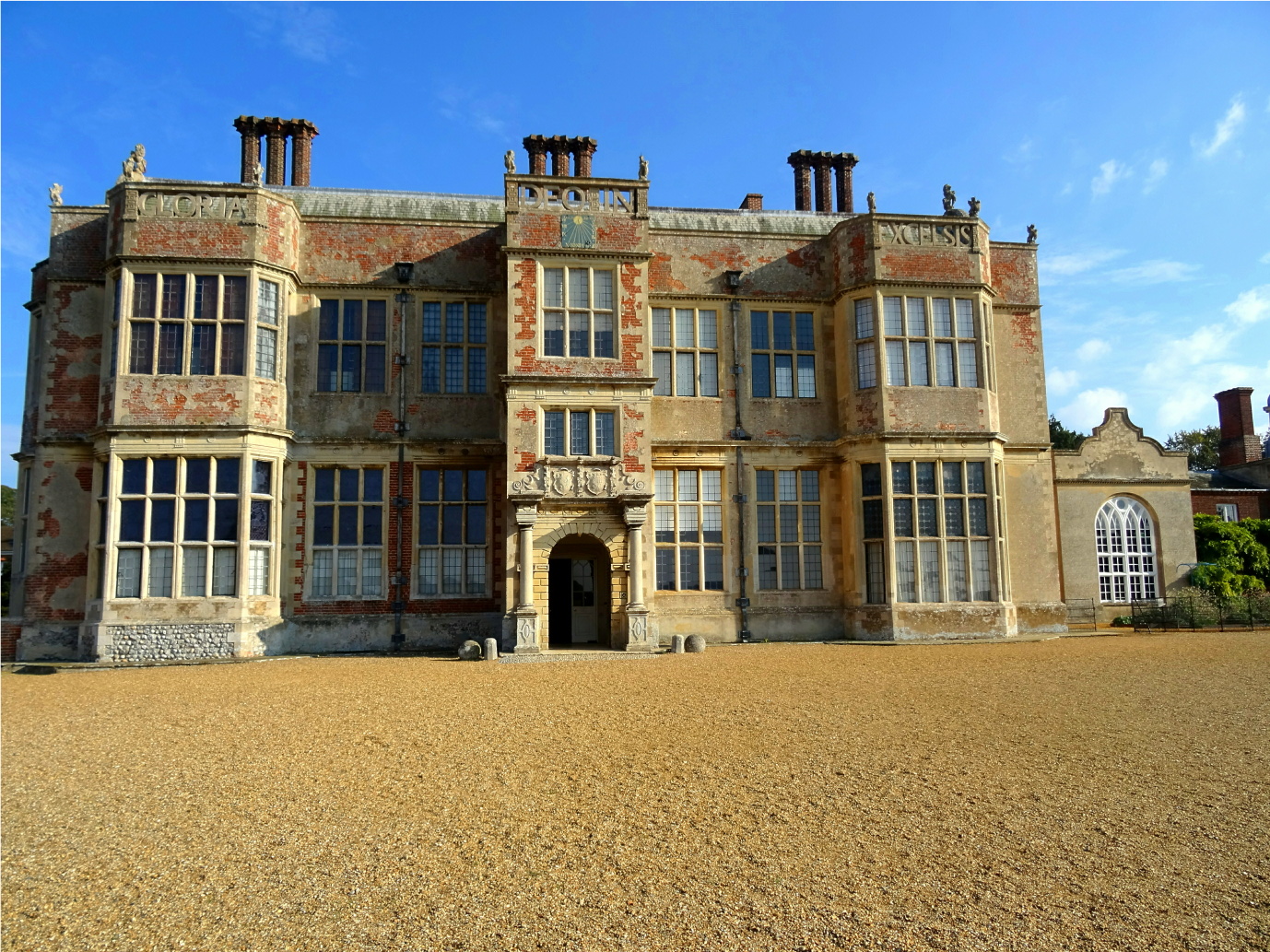Felbrigg Hall

Felbrigg Hall is located at Felbrigg near Norwich, Norfolk and at one time was one of the largest estates in Norfolk. The heart of the estate was built up before the Norman Conquest by the Bigod family who settled following the Danish invasions of the 9th century. The Domesday Book survey in 1086 recorded the village as a possession of the Bigod family, although it is believed to have been owned at one time by Gyrth Godwinson, the brother of King Harold the English King who was defeated at the Battle of Hastings in 1066. It was in the 11th century that the property came into the ownership of the Felbrigg family following the two families being united in marriage. Over the years they enlarged the estate and the Hall, which remained in the Felbrigg family until the mid-15th century when after the death of Sir Edmund Felbrigg it was acquired by the Wyndham (Later the Windham) family.
The current house dates back to around 1620 when Thomas Windham set about the development of the house using the same architect who was also involved with the work on Blickling Hall (See article above). The South Front, constructed of brick, flint and pebble was erected at this time although it is believed to have incorporated parts of a Tudor house which previously stood on the site,
Today the house offers visitors an insight into the way of life of not only the owner and his family but also for those who worked there. It contains many artefacts, enabling visitors to gain an impression of what it would have been like to live in those days. Many of the rooms can rival some of the rooms existing in many of the Royal palaces - rooms such as the Drawing room with its magnificent ceiling and the Dining Room with its fully set table. The Library, which was probably the Great Chamber of the Jacobean house contains many volumes from the time of William Windham I (1647-1689) with the collection being built up by his successors.
A number of bedrooms can be seen, including the Rose Bedroom, first fitted out in 1750. The ceiling with its plaster cove and border dates from 1687 but was probably taken from the Great Stairs in 1752. The Red Bedroom contains red and gold wallpaper which has provided a decoration since 1860 when the room was last decorated. The Chinese Bedroom, aptly named after its Chinese décor, and the Bathroom was created in the 1920’s from what was possibly a nursery.
Also to be seen are the working rooms including the Kitchen with its round headed windows which contains the large oak tables displaying a number of objects. The Servants’ Hall and Steward’s Room containing the desk of the Steward who administered the estate from there until 1970. Next to the Steward’s Room is the Tenants’ Waiting Room where they would wait until being called in to pay their rent.
The stable block and carriage-houses were built in 1824-5, and today house the cafeteria, restaurant and shop, although some of the stalls have been restored.
The gardens consist of different styles which include a traditional Victorian style which is arranged around an 18th-century orangery. The formal lawns are interspersed with areas of shrubbery. The gardens feature a variety of plants and trees, including a number from North America, including red oaks and western red cedars. The gardens also have a walled garden and a Dove-house built around 1753 in order to provide a source of meat for the Hall Kitchen.

To see more photographs and take a virtual tour of the site click on the photoshow below.
